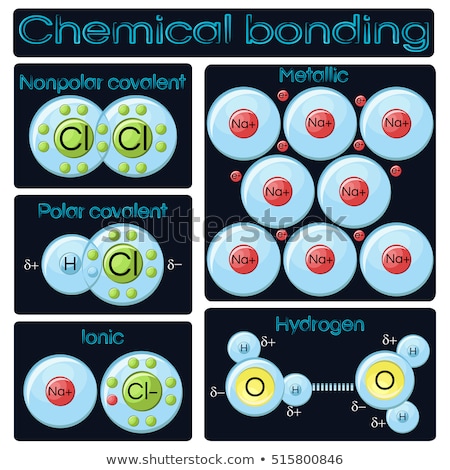

That’s because not all expenses the company accrues are paid right away. Although the company may incur liabilities, any payments toward these liabilities are not recorded as a cash outflow until the transaction occurs. Your business cash inflow includes all of the profit that your company makes through selling products, making investments, and other methods of increasing income. Cash flow statements help you follow your business cash flows and evaluate if and where you need to make changes to better suit your business growth. Operating expenses take a majority of business profits in order to maintain. Expenses like storage costs, utilities, travel expenses, and rent are all contributing factors in operating activities.
- The same elimination occurs for current liabilities in order to arrive at the cash flow from operating activities figure.
- It arises due to the activities of the business, i.e. operating, investing and financing activities.
- A cash flow statement, also known as a statement of cash flows, is a financial statement that documents the cash and cash equivalents a company generates and spends over a specific period.
- It is based on the accounting equation that states that the sum of the total liabilities and the owner’s capital equals the total assets of the company.
- If a company’s sales are struggling, they may choose to extend more generous payment terms to their clients, ultimately leading to a negative adjustment to FCF.
- Cash inflow sets the rate of business growth– the more cash inflow you have, the better set you are for your business funding.
For example, you need to focus on short-term cash flow as well as long-term. Short-term cash flow reports let you see how you manage your limited runway in real-time. With Mosaic, you can access this information easily on your financial dashboard. As your company scales, you have to plan for payroll to significantly outpace any other cash outflow you have to manage. The most basic form of cash flow reporting is the standard cash flow statement . This cash flow statement shows Company A started the year with approximately $10.75 billion in cash and equivalents.
Management and investors can use free cash flow to determine a company’s financial health. Additional Paid-in Capital AccountsAdditional paid-in capital or capital surplus is the company’s excess amount received over and above the par value of shares from the investors during an IPO. It is the profit a company gets when it issues the stock for the first time in the open market. Let’s go back to the earlier cash flow analysis example that we started with – IronMount Corp and BronzeMetal Corp had identical cash positions at the beginning and end of 2007. There are two ways to calculate cash flow from operations – 1) the Direct and 2) the Indirect method.
Why Do Businesses Need Cash Flow Statements?
For example, assume Company Z wants to open a new branch office in a major city. To pay for the new office, the company borrows a certain amount of money from the bank. The money that the bank puts into the company’s account is a cash inflow. Learn accounting fundamentals and how to read financial statements with CFI’s free online accounting classes.
Free cash flow is an important financial metric because it represents the actual amount of cash at a company’s disposal. A company with consistently low or negative FCF might be forced into costly rounds of fundraising in an effort to remain solvent. Similarly, if a company has enough FCF to maintain its current operations, but not enough FCF to invest in growing its business, that company might eventually fall behind its competitors. For yield-oriented investors, FCF is also important for understanding the sustainability of a company’s dividend payments, as well as the likelihood of a company raising its dividends in the future. These general categories of cash flow are located within the statement of cash flows, which is one of the financial statements that a business produces.
If you’re expending cash in your company, whether you’re making daily sales, looking to reinvest, or creating new advertising, you’re spending money. Likewise, these strategies should be boosting your cash inflow cash flow reveals only the outflow of cash by getting you more clients or customers, building connections through investments, and setting you up for future success. Yes, it refers to cash transactions, but it also includes many other forms of payment.
Definition of Free Cash Flow
All publicly traded companies must file financial reports and statements with the Securities and Exchange Commission . The cash flow statement is one of three critical documents, along with the balance sheet and income statement, included in SEC filings. It provides information about cash receipts, cash payments and the net change in cash resulting from a company’s operating, investing and financing activities. Free cash flow represents the cash that a company generates after accounting for cash outflows to support operations and maintain its capital assets. Cash flows can be analyzed using the cash flow statement, a standard financial statement that reports on a company’s sources and usage of cash over a specified time period. Corporate management, analysts, and investors are able to use it to determine how well a company can earn cash to pay its debts and manage its operating expenses.
Unconventional cash flow, as noted above, is characterized by a series of cash flows in different directions. This creates multiple different IRRs, which makes it more difficult for an analyst to value such a company. Once determined, IRRs are compared to the company’s hurdle rate or to the lowest possible return rate of a project. Spreadsheet software, especially a template from a free spreadsheet provider like Google Sheets, is the cheapest way to generate a cash flow statement.

It demonstrates an organization’s ability to operate in the short and long term, based on how much cash is flowing into and out of the business. Note that if your business lost money due to an investment, then the investment amount will be written as a negative. For instance, if in the above example, SunRays lost $5,000 then the net cash flow would be $350,000 + $50,000 – $5000 which would equate to a net cash flow value of $400,000. In real life, cash flow calculations are much more complex because adjustments need to be made. For instance, income statement calculations are prepared on an accrual basis and so the amounts cannot be directly used to calculate cash flow.
So, even if Company ABC has made a profit of $40 this year, its net cash inflow is $30. Cash flow refers to the net balance of cash moving into and out of a business at a specific point in time. Cash outflow is the net cash amount that is going out of your business because you are paying someone else or another entity. The owner may see an unconventional cash flow because once every five years, a maintenance check and renovation need to be done to ensure the quality of the amenities that the hostel’s guests use. Free Cash Flow to the Firm – This is a measure that assumes a company has no leverage . The 9 Best Self-Employed Accounting Software of 2023 We looked at the 20 most popular accounting software and assessed them by price, plan,…
The bottom line reports the overall change in the company’s cash and its equivalents over the last period. The term cash flow refers to the net amount of cash and cash equivalents being transferred in and out of a company. Cash received represents inflows, while money spent represents outflows. By having a clear and current cash flow statement, you’ll be able to predict trends in your spending and forecast the future of your business. You can also use the statement to reference past sales rates to plan your inventory, and change advertising strategies. Both cash inflow and outflow are happening in your business simultaneously.
Difference Between Cash Flow and Free Cash Flow
Shareholders and investors in a company will want to get the most profit out of their investments. As a result, information about an organization’s payables and receivables is critical. Moreover, it is an efficient way of gathering critical information about money flow into and out of business. Increasing capital expenditure implies a reduction, which may or may not be bad.
A cash flow statement lists your sources of cash, breaks them down by the type of cash activity and the transaction date. When you have negative cash flow, you aren’t making enough money to cover the cost of your operations. Your business, friend, is on its way out, unless you can manage your cash flow and figure out how to make more than you’re spending. In corporate finance, the debt-service coverage ratio is a measurement of the cash flow available to pay current debt obligations. Free cash flow is the cash left over after a company pays for its operating expenses and CapEx. It is the money that remains after paying for items like payroll, rent, and taxes.
” Income and profit are based on accrual accounting principles, which smooths-out expenditures and matches revenues to the timing of when products/services are delivered. Due to revenue recognition policies and the matching principle, a company’s net income, or net earnings, can actually be materially different from its Cash Flow. Cash Flow is the increase or decrease in the amount of money a business, institution, or individual has.
Including working capital in a measure of profitability provides an insight that is missing from the income statement. Such activities can be analyzed in the financial section of the company’s cash flow statement. Cash flow does not include what is there in the bank and the credit from suppliers. Cash flow is simply a measure of the cash that is entering your business or leaving your business during a certain period.
If you’re a business owner or entrepreneur, it can help you understand business performance and adjust key initiatives or strategies. Comprehensive income is the change in a company’s net assets from non-owner sources. EBITDA, or earnings before interest, taxes, depreciation, and amortization, is a measure of a company’s overall financial performance. A common approach is to use the stability of FCF trends as a measure of risk.
What is cash flow and why does business cash flow matter?
The essential part of the analysis is related to financing, operations, investments, and profits. This is useful during critical periods because it allows them to be prepared when investing, taking loans, repaying debts, and even reducing the workforce if it affects the business. Cash changes from making investments are considered use items, because cash is used on expenditures such as property, equipment or short-term assets. But when an asset is divested, that transaction is considered a source and is listed in cash from investing activities. Too many outstanding receivables can slow the money coming into your business and negatively impact cash flow.
Do Companies Need to Report a Cash Flow Statement?
Cash generated from form operating activities is called operating cash flow. It may be day to day activities like raw material purchases, end product sales etc. Investors look to the cash flow statement for insights into a company’s financial footing. Meanwhile, creditors can use the cash flow statement to gauge liquidity and determine whether a company can fund its operating expenses and pay off its debts. Cash inflow is the money going into a business which could be from sales, investments or financing.

